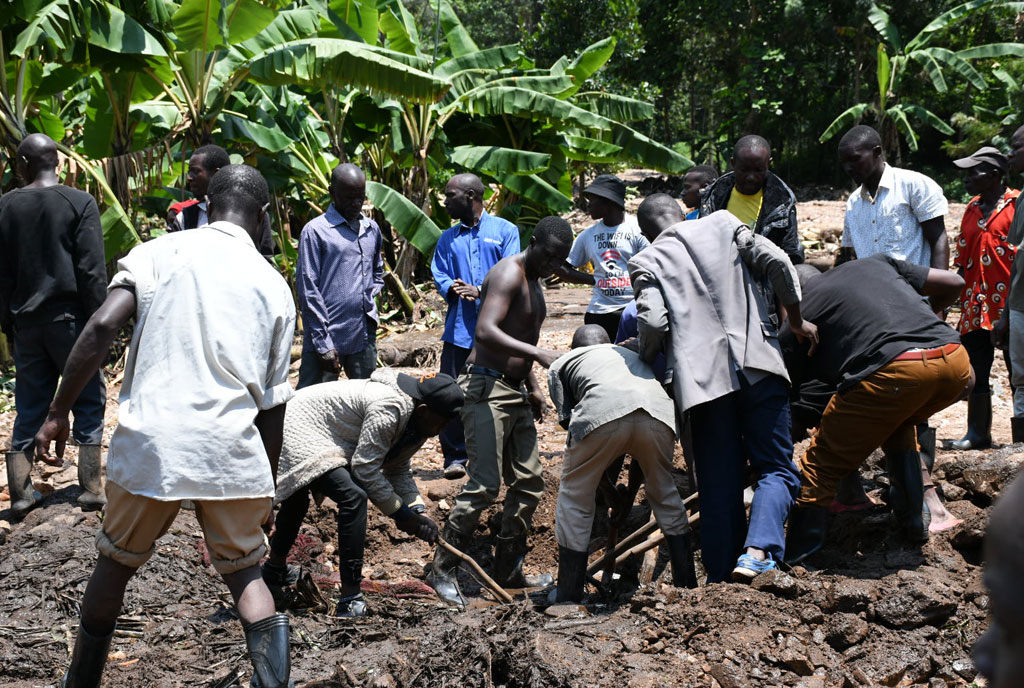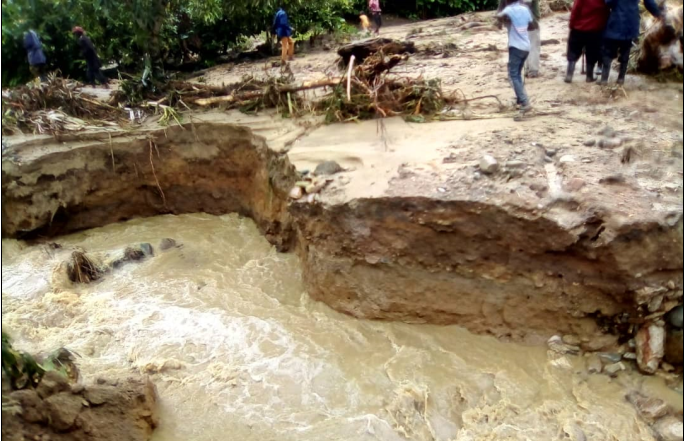Prime
Will Uganda’s plan to check disaster work?

Locals inspect some of the houses that were destroyed by mudlsides at Kasika Trading Centre in Kasese District on September 7. Photo/File
What you need to know:
- The government says the country is losing billions of shillings to deal with disasters.
Natural disasters have continued to wreak havoc across the country, and the Ministry of Relief, Disaster Preparedness and Refugees under the Office of the Prime Minister says the country has lost billions of shillings while dealing with disasters.
According to the Office of the Prime Minister, a post-disaster needs assessment conducted jointly by the government and non-governmental actors in 2020 stated that the cost of economic losses caused by disasters in 2019 and 2020 stood at Shs577.9 billion ($152m). This is expected to rise this year due to the recent floods and subsequent landslides in the eastern and western parts of the country.
A similar process to review disaster impacts in 2010 and 2011 had projected much higher economic losses and impacts of up to $752m (Shs2.9 trillion).
On Tuesday, the government launched the Disaster Management Plan aimed at addressing some of the issues caused by disasters in the country.
The launch was held at the Office of the Prime Minister. Present at the function were Ms Lukia Nakadama, the Third Deputy Prime Minister, Ms Esther Anyakun, the State minister for Relief, Disaster Preparedness and Refugees, among others.
“These significant increases in disaster impacts have negatively affected the ability of the country to sustain its socio-economic and political gains and thus retard the projected pace of development,” Uganda’s Disaster Management Plan reads in part.
It adds that Uganda is exposed to a wide range of hazards associated with the country’s diverse geo-climatic and socio-economic conditions such as drought, floods, earthquakes, landslides, environmental emergencies, and refugee crises.
According to Statista Disaster Monitoring Network, Uganda was ranked 15th globally and the first in Africa that is most affected by natural disasters.
The Disaster Management Plan states that climate change is expected to increase further exposure to disasters that will erode the coping capacities of individuals, households and communities.
Disasters have caused loss of lives and livelihoods as well as socio-economic and environmental impacts in Uganda.
The National Risk and Vulnerability Atlas report estimates that between 1930 and 2019, about 2,718 Ugandans lost their lives as a result of landslides alone while the World Bank estimates that between 1900 and 2018, a total of 200,000 deaths were registered as a result of disasters in the country.
The same report estimates that droughts affected close to 2.4 million people between 2004 and 2013.
It adds that more recently floods have caused the deaths and displacements of several people. In 2002, at least 1,000 deaths were reported and 150,000 people were displaced while in 2007, there were 21 deaths registered and 300,000 people displaced.
In 2013 (nine deaths and 32,219 displaced), 2019 (36 deaths and thousands displaced), 2020 (72 deaths and 87,000 displaced), 2021 (one dead and more than 1,000 displaced) and 2022 (nine deaths and 1,000 displaced).
Consequently, the document says over the decades, disaster risk impacts have increased in frequency and magnitude. Between 2010 and 2014, disasters reduced GDP performance by an average of 3.5 percent.
The Food and Agriculture Organisation of the United Nations put the cost of the 2008-2011 drought on the agricultural sector at about $863 million, which is the equivalent of about 7.5 percent of the 2011 GDP.
The 2016 drought, on the other hand, reduced the GDP to about 2.3 percent and led to an increase in poverty from 19.7 to 21.4 percent. It also left five million people food insecure, diverted Shs25 billion allocated for development to relief food, and necessitated the reallocation of Shs63 billion for emergency planting materials, among others.
According to the Disaster Management Plan, with increased effects of climate change, the environment is impacted by cyclic disasters and that over a third of Uganda (75,300 km²) is susceptible to hailstorm impact on the environment. Approximately 41,574 km² (58 percent) of national parks, 48,687 km² (87 percent) of wildlife reserves and 26870 km² (47 percent) of forest reserves are exposed to floods.
“These combined environmental impacts are related to land degradation, wetland degradation, deforestation, pollution, and poor solid waste management that are a threat to food security, economic progress and livelihoods of Ugandans,” it states.
Resource needs estimation
According to the disaster response plan, Uganda needs an estimated Shs10.6 trillion ($2.8 billion) to manage disasters. The Disaster Management Plan states that the government is providing initial seed funds of $50 million (Shs190 billion) to support the Department of Disaster Preparedness and Management (DDPM) in OPM. The document says DDPM/OPM, National Planning Authority, and ministries, Departments and Authorities will review the total government estimated contribution towards funding the plan within the next three years and define the funding gap that will be presented to the donors and other stakeholders.
During the opening of a high-level meeting in Kampala yesterday Ms Nakadama, who delivered a speech on behalf of Prime Minister Robinah Nabbanja, said the past decade has seen the country experience very costly and disastrous disasters that have cost lives, property and led to massive displacement and loss of livelihoods.
“Our people have faced landslides, floods, droughts, hailstorms, lightening, among other disasters. Some of the most recent disasters are still fresh in our minds,” Ms Nakadama said.
She added: “The floods in Mbale City, where 29 people died, the Kasese landslides where 16 people died, the landslides in Bududa, displacements in Bundibugyo, Kapchorwa, Bulambuli, Nakasongora, Ntoroko, Buliisa, Rubanda, Amolatar, Teso sub-region, Kayunga and the entire Lake Kyoga Basin, are some of the examples.”
The minister said critical infrastructure such as roads, bridges, schools, health centres, and power stations have been destroyed.
“Our capacity to respond and also to build the required resilience and preparedness to the causes and effects of disasters has been hampered by other demands as well as the effects of Covid-19, but the commitment of the government remains unwavering,” Ms Nakadama said.




